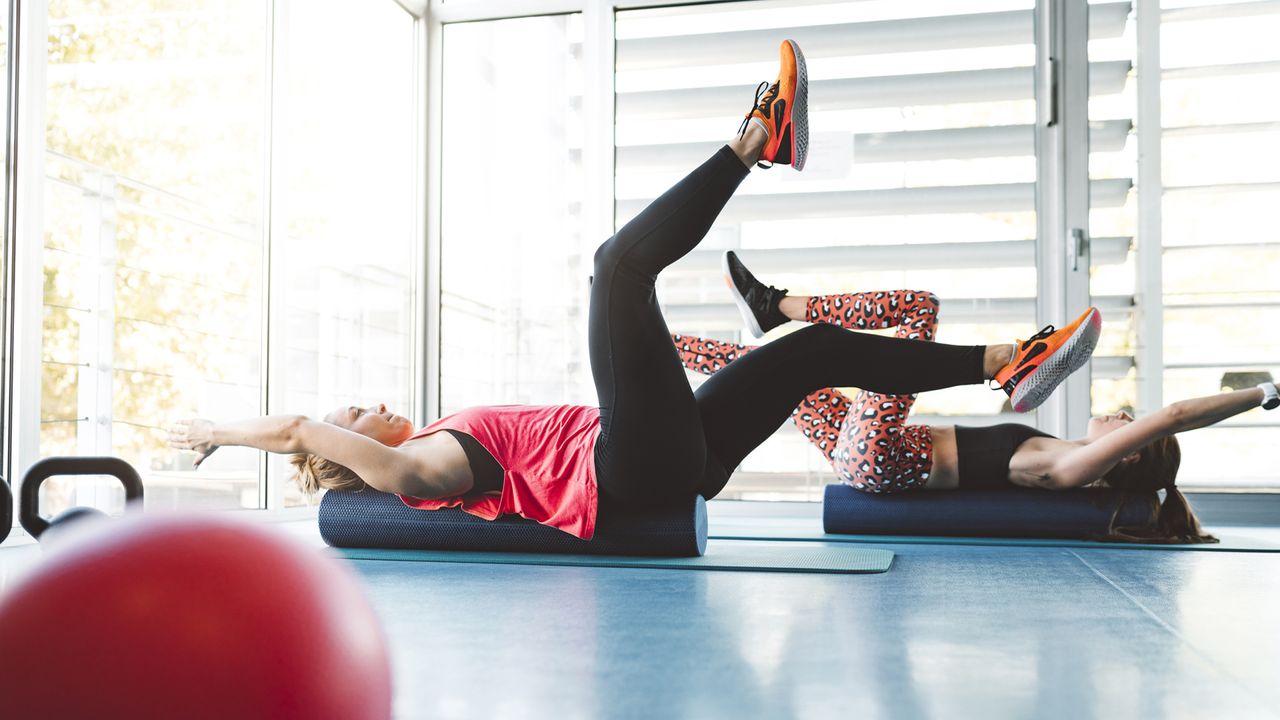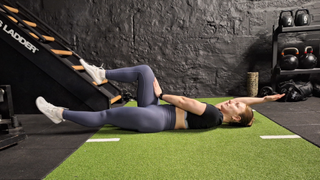ActiveWorkoutsI did deadbugs for four months and this core exercise changed my body for the betterThey’ve now got a firm place in my training routineWhen you purchase through links on our site, we may earn an affiliate commission.Here’s how it works.
ActiveWorkoutsI did deadbugs for four months and this core exercise changed my body for the betterThey’ve now got a firm place in my training routineWhen you purchase through links on our site, we may earn an affiliate commission.Here’s how it works.
They’ve now got a firm place in my training routine
When you purchase through links on our site, we may earn an affiliate commission.Here’s how it works.
(Image credit: Getty Images)

(Image credit: Getty Images)
Jump to category:How to do dead bugsMy experienceDead bug variations
Jump to category:How to do dead bugsMy experienceDead bug variations
One of my favourite things to train has got to be my core. ‘Really? That’s a bit boring’ you may be thinking. But, actually, our core are the group of muscles that stabilise our spine and trunk of the body, as well as help us move, so they’re pretty important. I love trialling and testing new core exercises to see which ones I find the most beneficial. For the past four months I’ve been doing dead bugs, five times a week and I’m pleased to confirm I genuinely think they’re better than doing the plank.
In case you’ve never heard of them before, deadbugs are a core exercise where you lie on your back and extend your opposite leg and opposite arm at the same time. They target the rectus abdominis (the six-pack muscles), tranverse abdominis (your deep core muscles), as well as the spinal erectors which support your lower back and stabilise the spine. They’re beginner-friendly and be can done practically anywhere – there’s so manygreat reasons to do dead bugs! Here’s how I got on doing them for the last four months.
How to do dead bugs
Make sure you use an exercise mat when performing the deadbug, as I can assure you they’re not comfortable without one. Here’s how you do them:
Dead bugs for four months – my experience
(Image credit: Future)

(Image credit: Future)
One big difference I noticed after four months of doing dead bugs was that they’ve helped to relieve a lot of my lower back pain. I’ve suffered with this for a long time, particularly in the mornings, when I feel it’s at its stiffest, or after a long day of sitting. I’d do something that I like to call the ‘toe test’ (where I see if I can get my hands to touch my toes) and prior to doing the dead bugs I could never get my hands to touch them in the morning. However, since doing them I can almost reach them every time.
The second thing was my performance during my training had improved. During mycompound exercises, like front andback squats, I would rely heavily on myweightlifting beltto help with my bracing and offer a little support to my back. Now, I’ve been using it less, as my core feels a lot stronger and I feel I can manage without it. Plus, as my lower back pain is no longer as bad I’m not as tempted to reach for the belt every time. I’ve even felt more stable during my runs; I wobble less if I have to dodge something in my path and I have no back pain afterwards.
Sign up to the T3 newsletter for smarter living straight to your inbox
Get all the latest news, reviews, deals and buying guides on gorgeous tech, home and active products from the T3 experts
Dead bugs definitely have not given me a six-pack yet (who knows, give me four more months…). However, my core generally feels more stable and stronger. I feel they’ve helped my body be able to physically function better and that’s a huge win over aesthetics in my eyes.
Dead bug variations
As I mentioned earlier, dead bugs are brilliant for everyone because they’re so versatile. Start with your bodyweight, then once these become too easy, and you need something a little more challenging, give these a go:
- Knee-press dead bug
This is where you simply push your opposite hand into your opposite thigh and then do the dead bug movement with the remaining arm and leg. It creates extra abdominal pressure and is a great next step to challenging your core if you don’t have home gym equipment for the other variations below. Just make sure you’re continuously pushing your hand into your thigh throughout the movement.
- Banded dead bug
Once you find the knee-press dead bug too easy, move onto this variation using a resistance band. It’ll remind you what that deep abdominal burning sensation feel likes. You can either do it with a long pull-upresistance band(as shown below) or a small loop band. If you have the latter, just loop it around your wrists, pull your hands to shoulder-width apart and give your dead bugs a go, or pop it around your knees.
- Dumbbell dead bug
If you don’t own a resistance band, again, you can enhance the difficulty of this exercise with either asingle dumbbellorone kettle. Whatever weight you choose, hold it with both hands, arms extended above you, and then just take one leg in and out at a time.

Nintendo’s crazy smart alarm clock will soon be on general saleThe playful Alarmo clock is ending online exclusivity to land in a store near you
The playful Alarmo clock is ending online exclusivity to land in a store near you

Ring announces first ever smart smoke alarms in collaboration with KiddeRing partners with Kidde on smart smoke and carbon monoxide alarms
Ring partners with Kidde on smart smoke and carbon monoxide alarms